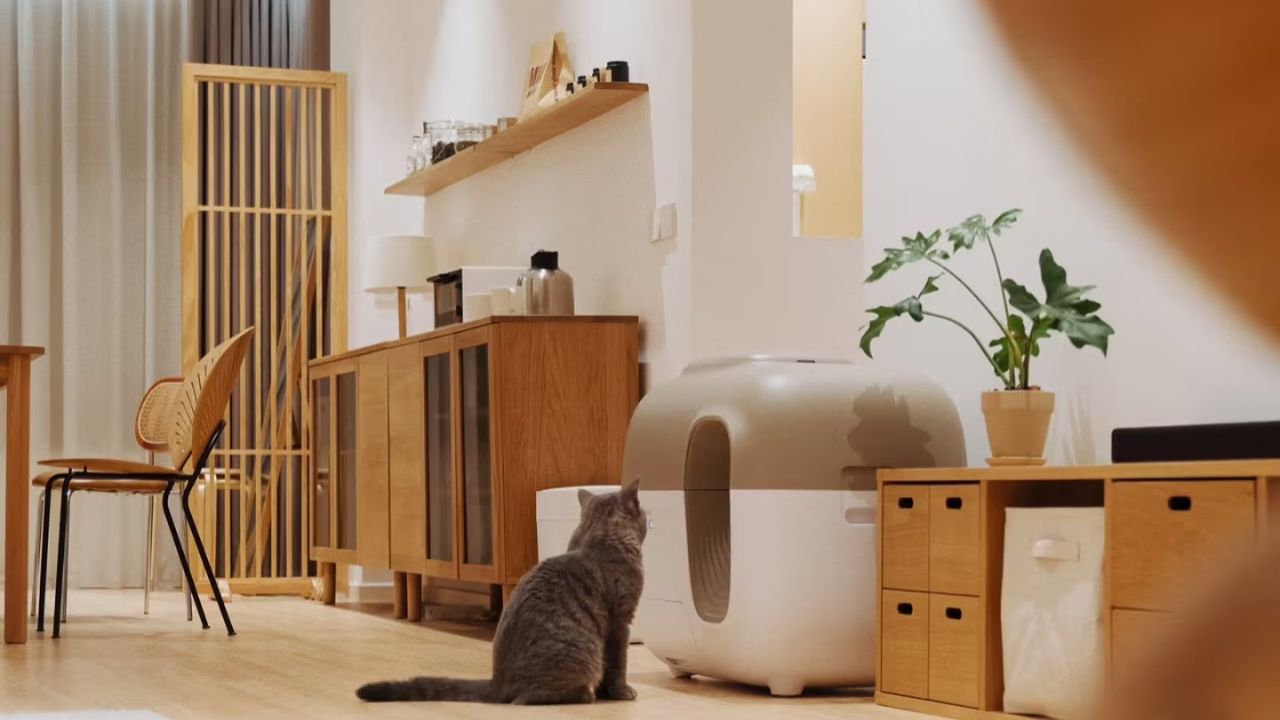Today's cat guardians are progressively adopting smart litter boxes. These boxes streamline pet care and maintain tidier home surroundings. These technically advanced litter boxes offer automated cleaning, odor management, and benefits, rendering them an attractive choice for busy pet parents. However, selecting the proper cat smart litter box demands practical consideration of numerous factors. The subsequent key facets must be assessed before purchasing to ensure the best experience for both the cat and the caretaker.
Types of Accepted Litter
Dissimilar automated litter receptacles are engineered for certain litter kinds. Some designs function best with clumping clay grounds coverings, whereas others necessitate silica gel, degradable or crystal litter. Opting for a device compatible with preferred cat waste materials is fundamental to maintaining functionality. Additionally, less dense or non-clumping litter may interrupt certain self-cleaning mechanisms, causing operational difficulties. Confirming litter compatibility guarantees performance, meets expectations, and remains effortless to maintain.
Noise Levels and Cat Sensitivities
Smart litter boxes occasionally include engines and automated components that can create sounds during usage. Some cats are more sensitive to noises. Picking a model with quiet operation is critical to ensuring cats feel comfortable. Furthermore, gradual habituation and training may be needed for cats to adjust to an automated litter box.
Self-Cleaning Mechanism
One of the main reasons pet guardians invest in smart litter boxes is the self-cleaning feature. Dissimilar models employ various mechanisms to eliminate waste. It is essential to select a model with a trustworthy and proficient self-cleaning system to prevent litter from becoming clogged or stuck. Additionally, the frequency of waste disposal and the simplicity of maintenance should be considered. A smart litter box that functions smoothly and demands minimal intervention from the guardian will provide maximum convenience.
Odor Control Features
Smart litter boxes aim to minimize stenches with techniques like activated carbon filters, sprays that mask malodors, and automated sealed chambers. Top-tier technologies employ ultraviolet light sterilization or antimicrobial surfaces to curb bacterial overgrowth and resulting odors. Ensuring robust odor control keeps living spaces smelling pleasant while providing a cleaner environment for feline family members and their human counterparts alike.
Power Source and Battery Backup
Seldom did intelligent litter boxes not depend on an uninterrupted energy source to function as designed. Some variants included rechargeable batteries, allowing operation even when power outages affected the home. Foremost was considering outlet locations and backup options when selecting the appropriate system for any household. An unyielding power supply assured constant performance, preventing the accumulation of waste and maintaining a hygienic habitat.
Ease of Cleaning and Maintenance
Notwithstanding self-cleaning mechanisms, wise litter receptacles periodically necessitated upkeep. Refuse containers are indispensably evacuated, and sensors are reliably reviewed while movable parts are occasionally purified. Opting for a design facilitating disassembly and cleansing conserved time and effort of pet keepers. Furthermore, brands offered disposable liners or washable constituents, further simplifying servicing. Securing an engineering structure for effortless cleaning contributed to a more enjoyable experience for each human and feline.
Safety Features
An intelligently engineered litter box necessarily includes safety features preventing incidents or malfunctions. Motion sensors normally incorporated into advanced versions detected when a cat inhabited the cavity, pausing the self-cleaning cycle until the cat exited. This shielded against potential wounds or distress. Overheating protection and error alerts also contributed to a secure user experience. Before procuring an intelligent litter box, owners reviewed its security mechanisms to ensure compatibility for their pets.
Connectivity and Clever Features
Many innovative litter boxes today come with application integration, letting caretakers remotely track their cat's litter box behavior. Some types deliver notifications when waste bins need emptying, or litter requires replenishing. Advanced functionalities, including health monitoring, weight measurement, and data examination, provide insights into the cat's urinary and digestive well-being. While these attributes can be advantageous, owners must consider whether they necessitate such technology and whether the program is straightforward to use and compatible with their devices.
Cost and Long-Term Investment
Smart litter boxes differ widely in price, with high-end models offering more advanced attributes. It's important to balance budgetary considerations with quality and practicality. While a more pricey litter box may provide greater ease, it should also be durable and dependable to warrant the investment. Additionally, ongoing expenses, including specialized litter, replacement filters, and waste containers, should factor into the choice.
Conclusion
There are many factors to take into account when choosing a smart litter box for a cat. Convenience can be increased by features like connectivity, safety features, and noise level, but they should also take into account the individual needs of the cat and its owner. Pet owners can choose a smart litter box that makes feline care easier while still giving their furry friends comfort and cleanliness by carefully weighing these factors.


